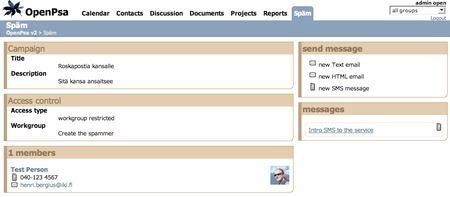Working over the web
There have been some interesting posts lately about switching to use hosted “Web 2.0” applications as the main IT infrastructure. Jukka Zitting writes:
I am sick and tired of doing backups, synchronizing settings, and having trouble accessing information. These are all symptoms of keeping your data locally on multiple computers. As a new year’s resolution I have decided to get rid of all these problem[s].
And IT Redux continues about what they call Office 2.0:
No painful software upgrade. When your applications are served by online service providers, someone else is doing software upgrades for you, and if you carefully select your providers, such upgrade can be totally painless, as was related in this post.
Of course, all these benefits disappear if you cannot get access to a decent Internet connection, which is a requirement for Office 2.0, much like a desktop computer was a requirement for Office 1.0. If you need to work offline, Office 2.0 might not be the best option for you, and you should not believe people who advertise online services that can work offline as well. They do not, because they should not, so make up your mind and go with what works best for you, based on your own set of requirements.
The great thing about using Open Source applications like OpenPsa is that you can choose between having it hosted for you, and running it yourself. At first you can get the hosted version, and get all the benefits of not having to hassle with backups, installations and other things. And if you later in your company’s growth path decide it is better to run the software yourself, you can easily switch to that model.
Actually you could even run a local OpenPsa installation on your Mac or Linux laptop and replicate using Exorcist to achieve Notes-like replication.
In related news, Seth Gottlieb pointed to an interesting article about the death of enterprise software by Joe Lamantia:
For enterprise software, I think organizations will turn away from monolithic and expensive systems with terrible user experiences – and correspondingly low levels of satisfaction, quality, and efficacy – as the best means of meeting business needs, and shift to a mixed palette of semantically integrated capabilities or services delivered via the Internet. These capabilities will originate from diverse vendors or providers, and expose customized sets of functionality and information specific to the individual enterprise. Staff will access and encounter these capabilities via a multiplicity of channels and user experiences; dashboard or portal style aggregators, RIA rich internet applications, mobile devices, interfaces for RSS and other micro-content formats.
